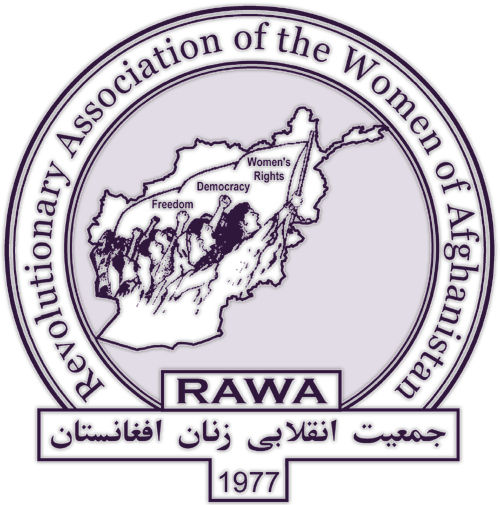VRAE
Peru: opposition protests US troop deployment
Peru's Congress on May 19 voted 70-33 with four abstentions to approve Legislative Resolution 4766, authorizing US troops to be stationed on the national territory from June 1 to Dec. 31. Lima lawmaker Alfredo Azurín, president of the Commission on National Defense, Internal Order & Anti-Drug Struggle, said the soldiers will carry out training missions and joint exercises with Peru's armed forces and National Police. He named several regions where the troops will be mobilize, including Loreto, San Martín, Huánuco, Ucayali, Pasco, Junín, Huancavelica, Cuzco, Ayacucho and Apurímac. Azurín assured that there is no intention to establish a US military base in Peru, and that the congressional decision has no effect on the country's national sovereignty. (Congreso Noticias)
Protests as US troop mission approved for Peru
Peru's Congress last month, at the behest of President Pedro Castillo's government, voted to approve the entry of US military troops for participation in several weeks of anti-drug and anti-terrorism operations. But the Aug. 4 vote was protested by voices within Castillo's own Partido Perú Libre (PPL), with legislator Kelly Portalatino calling it a "sign of submission." (Prensa Latina) A previous such US troop mission in 2015 saw operations in the Valley of the Apurímac and Ene Rivers (VRAE), a key coca cultivation zone. Campesinos of the VRAE Federation of Agrarian Producers (FEPAVRAE) have just announced a region-wide indefinite paro (civil strike) to begin Oct. 5 in protest of ongoing government coca-eradication campaigns. (Sputnik)
Peru: mass mobilization against neo-fujimorismo
Under the slogans "Fujimori nunca más" and "Keiko No Va," many thousands of Peruvians filled the streets of Lima and cities across the country May 22 to repudiate the presidential candidacy of Keiko Fujimori, contender of the far-right Fuerza Popular party and daughter of imprisoned ex-dictator Alberto Fujimori. The lead contingent in the rally that filled downtown Lima's Plaza San Martín was composed of survivors of the reign of terror during the 1992-2000 Fujimori dictatorship.
Peru: coca eradication met with guerilla attack
Announcement of an aggressive new coca-eradication campaign in Peru was met with a deadly attack on security forces in the targeted production zone. Authorities said "narco-terrorists" attacked a National Police patrol in the Apurímac-Ene-Mantaro River Valley (VRAEM), leaving two troops dead. The VRAEM, a pocket of jungle on the eastern slopes of the Andes, is said to produce 75% of Peru's coca leaf, but the government has until now resisted US pressure to launch an eradication program there, for fear of enflaming the tense situation in the valley. A surviving remnant of the Shining Path insurgency remains active in the VRAEM, offering cocaleros protection from security forces in exchange for their loyalty.
Trump: drug war general to Homeland Security
President-elect Donald Trump is reported to have named the former chief of the Pentagon's Southern Command, Gen. John Kelly, as his choice for secretary of Homeland Security. As SouthCom chief, Kelly oversaw counter-narcotics operations throughout Central and South America and the Caribbean from late 2012 until his retirement in January 2016. He was a notorious hardliner, which resulted in policy clashes with President Obama, the Washington Post tells us. As Homeland Security chief, he will oversee the 20,000-strong Border Patrol, with responsibility for drug interceptions along the 2,000-mile frontier with Mexico.
Peru: new effort against Shining Path remnants
Peru's newly appointed defense minister, Jorge Nieto Montesinos, announced that he will focus on wiping out remnant Shining Path guerilla rebels who continue to operate in the Apurímac-Ene-Mantaro Valley (VRAEM), the country's main coca-producing region. Nieto, formerly culture minister, was named defense minister in a reshuffling of President Pedro Pablo Kuczynski‘s four-month-old cabinet. The VREAM is considered by the UN to be the world's most prolific coca cultivation zone, accounting for a third of Peru's annual production. It is also the country's last significant guerilla stronghold. The integrated counter-narcotics and counterinsurgency effort in the VREAM was dealt a setback in October, when Lt. Wilmer Delgado, commander of an army outpost in the valley, was arrested on charges of collaborating with traffickers and receiving payments of allowing drug flights to operate in the area. (Peru Reports, Dec. 7; La República, Dec. 5; La República, Oct. 23)
Peru elections: 'dangerous farce'?
Reuters takes relief that Peruvian markets jumped on April 11 as results showed two "free-market candidates" emerging victorious from the previous day's first-round presidential race. "Conservative" Keiko Fujimori, with an estimated 40% of the vote, will now face "centrist" Pedro Pablo Kuczynski, with some 22%, in a June run-off. Markets evidently reacted favorably to the failure of "nationalist" Veronika Mendoza to make the second round, winning only some 18%. As the headline put it: "Two pro-business candidates make Peru runoff, markets rise." The BBC News calls Fujimori "centre-right." New York Times also calls Kuczynski "centrist" and (more accurately) Keiko "right-wing." These labels reveal illusions, and the degree to which what used to be the right is now considered the "center." Kuczynski (known by his initials PPK) is a former World Bank economist and veteran cabinet minister under the presidency of Alejandro Toledo. He is the one who is actually the "conservative" of the "center-right"—a standard neoliberal technocrat. Fujimori's intransigent and unapologetic defense of her father Alberto Fujimori—who ruled as a dictator in the '90s and is now imprisoned for assassinations and human rights abuses—clearly places her on the far right.
Peru: protests as US military forces arrive
Without fanfare in either country, some 3,000 US troops are now arriving in Peru for an anti-drug "training mission." The troops embarked, along with several cargo planes, on the USS George Washington Sept. 1—sparking street protests in Lima. Thousands filled downtown Lima chanting slogans against the "Yankee terrorists," and several US flags were burned. Ex-congressman Gustavo Espinoza decried what he called a "military invasion." He suggested that the US had ulterior motives behind the mobilization: "What is looming is a sort of 'sting operation'...designed to enhance the North American presence not only in Peru but in the Americas... The Empire seeks to change the correlation of forces now in place in the region." (HispanTV, Sept. 2; TeleSUR, Sept. 1)















Recent Updates
5 hours 2 min ago
6 hours 44 min ago
22 hours 11 min ago
1 day 6 hours ago
2 days 23 hours ago
2 days 23 hours ago
3 days 4 hours ago
3 days 4 hours ago
4 days 4 hours ago
5 days 39 min ago